 | TODAY IN SCIENCE HISTORY NEWSLETTER - 3 JUNE |
| Feature for Today |
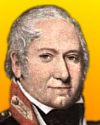 On 3 Jun 1761 was born an Englishman (see quiz below) who joined the Royal Artillery shortly after his 18th birthday, and spent his life in service. He invented a percussion lock for small arms, which he patented in 1834, and made other improvements in fuses, ammunition, small arms and the sighting of guns. On 3 Jun 1761 was born an Englishman (see quiz below) who joined the Royal Artillery shortly after his 18th birthday, and spent his life in service. He invented a percussion lock for small arms, which he patented in 1834, and made other improvements in fuses, ammunition, small arms and the sighting of guns.Perhaps his greatest invention, which he refined over a number of years, until the authorities finally accepted it, was a shell with a spherical case containing shrapnel - usually small lead musket balls - designed to explode in flight to injure enemy soldiers over a wide area. Some background on the Invention and Development of the Shrapnel Shell can be found in an article reprinted from the Journal of the Royal Artillery (Jan 1920). |
| Book of the Day | |
| |
| Quotations for Today | |
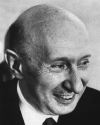 | "One way of dealing with errors is to have friends who are willing to spend the time necessary to carry out a critical examination of the experimental design beforehand and the results after the experiments have been completed. An even better way is to have an enemy. An enemy is willing to devote a vast amount of time and brain power to ferreting out errors both large and small, and this without any compensation. The trouble is that really capable enemies are scarce; most of them are only ordinary. Another trouble with enemies is that they sometimes develop into friends and lose a great deal of their zeal. It was in this way the writer lost his three best enemies. Everyone, not just scientists, needs a good few enemies." |
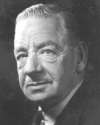 | "A drug is a substance which, if injected into a rabbit, produces a paper." |
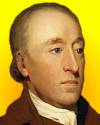 | "Man is made for science; he reasons from effects to causes, and from causes to effects; but he does not always reason without error. In reasoning, therefore, from appearances which are particular, care must be taken how we generalize; we should be cautious not to attribute to nature, laws which may perhaps be only of our own invention." |
| QUIZ | |
| Before you look at today's web page, see if you can answer some of these questions about the events that happened on this day. Some of the names are very familiar. Others will likely stump you. Tickle your curiosity with these questions, then check your answers on today's web page. | |
| Births | |
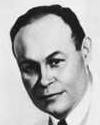 |  Charles Richard Drew, born 3 June 1904 was a Black American physician and surgeon who was an authority on human blood. Charles Richard Drew, born 3 June 1904 was a Black American physician and surgeon who was an authority on human blood. What was his important contribution? What was his important contribution? |
 |  On 3 June 1761, an English army general was born who invented the shrapnel shell. Shrapnel projectiles contained small shot or spherical bullets, usually of lead, along with an explosive charge to scatter the shot as well as fragments of the shell casing. The resulting hail of high-velocity debris was often lethal. On 3 June 1761, an English army general was born who invented the shrapnel shell. Shrapnel projectiles contained small shot or spherical bullets, usually of lead, along with an explosive charge to scatter the shot as well as fragments of the shell casing. The resulting hail of high-velocity debris was often lethal.  Can you name this man? Can you name this man? |
| Deaths | |
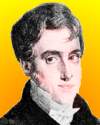 |  Nicolas-Fran�ois Appert (c.1750-1841) was a French chef, confectioner, and distiller. Nicolas-Fran�ois Appert (c.1750-1841) was a French chef, confectioner, and distiller.  What did he invent that is still is use today? What did he invent that is still is use today? |
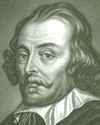 |  William Harvey (1578-1657) was an English physician who was also an expert on an aspect of human blood. Harvey's courage, penetrating intelligence, and precise methods were to set the pattern for research in biology and other sciences for succeeding generations, so that he shares with William Gilbert, investigator of the magnet, the credit for initiating accurate experimental research throughout the world. William Harvey (1578-1657) was an English physician who was also an expert on an aspect of human blood. Harvey's courage, penetrating intelligence, and precise methods were to set the pattern for research in biology and other sciences for succeeding generations, so that he shares with William Gilbert, investigator of the magnet, the credit for initiating accurate experimental research throughout the world.  What was his discovery about blood in the human body? What was his discovery about blood in the human body? |
| Events | |
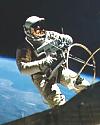 |  On 3 Jun 1965, the first American astronaut to make a spacewalk was Major Edward White II, when he spent time outside the Gemini 4 capsule during Earth orbit at an altitude of 120 miles. A tether and 25 foot airline were wrapped in gold tape to form a single, thick cord. He used a hand-held 7.5 pound oxygen jet propulsion gun to maneuver. The launch had taken place a few hours earlier on the same day. Soviet cosmonaut Aleksei A. Leonov, had made the first ever spacewalk for 10 minutes about three months earlier. On 3 Jun 1965, the first American astronaut to make a spacewalk was Major Edward White II, when he spent time outside the Gemini 4 capsule during Earth orbit at an altitude of 120 miles. A tether and 25 foot airline were wrapped in gold tape to form a single, thick cord. He used a hand-held 7.5 pound oxygen jet propulsion gun to maneuver. The launch had taken place a few hours earlier on the same day. Soviet cosmonaut Aleksei A. Leonov, had made the first ever spacewalk for 10 minutes about three months earlier. To the nearest ten minutes, how long was the American first spacewalk? To the nearest ten minutes, how long was the American first spacewalk? |
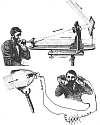 |  On 3 Jun of a certain year, the first wireless telephone message was transmitted by light. The voice vibrations could be reconstructed back into sound at the receiving end of the projection. In this way the device functioned similarly to the telephone; the difference was that the device used light as a means for projecting the information, while the telephone used electricity. On 3 Jun of a certain year, the first wireless telephone message was transmitted by light. The voice vibrations could be reconstructed back into sound at the receiving end of the projection. In this way the device functioned similarly to the telephone; the difference was that the device used light as a means for projecting the information, while the telephone used electricity. In what decade was this message transmitted by light? In what decade was this message transmitted by light? |
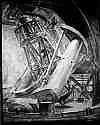 |  On 3 Jun 1948, a 200-inch (5.08 m) U.S. reflecting telescope was dedicated. This was the first in the world with a 200-inch lens, which after casting was permitted to cool slowly over an 11 month period. The resulting 20-ton glass disk then required 11 years of careful grinding and polishing. The telescope was officially named after the astronomer who conceived, designed and promoted this telescope, though he died before it was completed. On 3 Jun 1948, a 200-inch (5.08 m) U.S. reflecting telescope was dedicated. This was the first in the world with a 200-inch lens, which after casting was permitted to cool slowly over an 11 month period. The resulting 20-ton glass disk then required 11 years of careful grinding and polishing. The telescope was officially named after the astronomer who conceived, designed and promoted this telescope, though he died before it was completed. Can you name this telescope? Can you name this telescope? |
| Answers |
When you have your answers ready to all the questions above, you'll find all the information to check them, and more, on the June 3 web page of Today in Science History. Or, try this link first for just the brief answers. Fast answers for the previous newsletter for June 2: lead; vanadium; Panama Canal; Newton's Principia; the decade including the year 1896; Thomas Watson. |
| Feedback |
 If you enjoy this newsletter, the website, or wish to offer encouragement or ideas, please send feedback by using your mail reader Reply button. If you enjoy this newsletter, the website, or wish to offer encouragement or ideas, please send feedback by using your mail reader Reply button. |
--
If you do not want to receive any more newsletters, Unsubscribe
To update your preferences and to unsubscribe visit this link



Δεν υπάρχουν σχόλια:
Δημοσίευση σχολίου